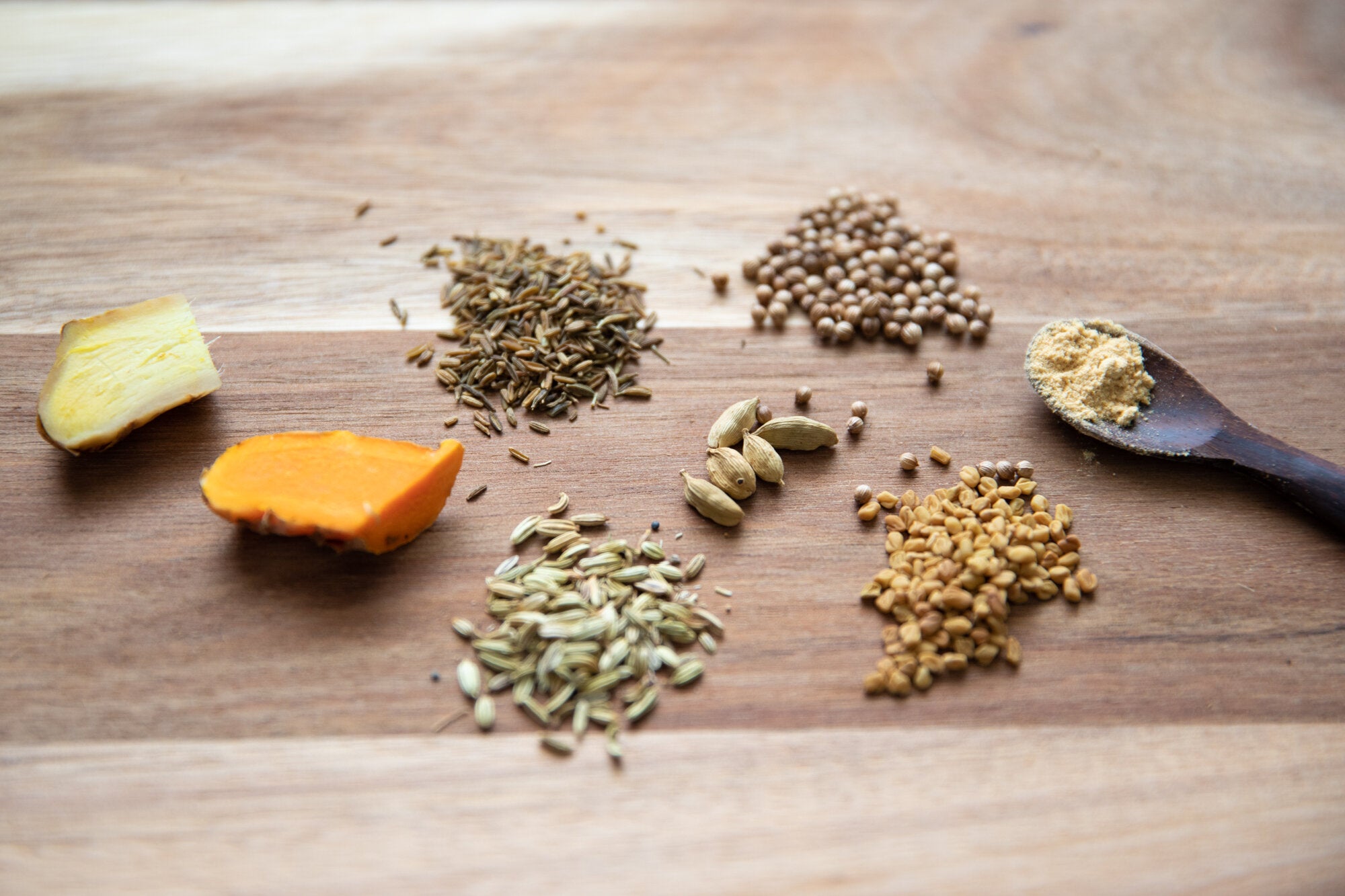
It may surprise you to learn that eating a food prepared with the Ayurvedic principles means you get to enjoy your food — perhaps more than you ever have.
That’s because true enjoyment comes from eating in a way that nourishes your body and mind.
Using Ayurvedic spices for balance
Ayurvedic wisdom says that you need to enjoy your food five times:
- Planning it
- Preparing it
- Cooking it
- Eating it
- Digesting it.
- When we ran our Ayurvedic chef trainings, we also thought of a sixth way: serving it.
At each step, you have the opportunity to engage your senses to get the most out of the experience. Make your food look and smell wonderful and you'll feel better for having cooked it and eaten it. A sure way to enjoy each step is to include Ayurvedic spices in every meal.
When you support your digestive fire with these aromatic spices, you're doing more than creating delicious meals — you're strengthening your agni, the transformative force that allows you to digest not just food, but life itself. This is the foundation of our signature 4-week Agni Therapy program, where you learn to cultivate this inner strength through simple, daily practices like the spice combinations below.
Spices have been used for centuries in Ayurvedic cooking as a way to make food a feast for all five ways you can experience it. High-quality spices, such as cumin, coriander, mustard seed and fennel, not only make the food smell and taste delicious, they also support digestion and balance a meal by ensuring all shad rasa, or six tastes, are present.
We’ve included four different spice combinations below to get you started. Use the meal planning guide from our post on the Hale Pule balanced bowl and these spice combinations to create delicious and healing meals every day.
Buying, storing and using Ayurvedic spices
It’s common to see a rack of spices beautifully displayed on a kitchen counter, but this practice greatly shortens the life of this most important ingredient in your meal. Sunlight breaks down the prana in spices quickly, which is why we suggest you store yours in a cupboard away from the light.
Also take note of how the spices are stored when you purchase them so you don't end up eating something that has been sitting on a shelf for years. Look for vendors who sell spices in containers that block the light, especially if you are buying ground spices as the volatile oils break down very quickly. Purchase small amounts from a reliable source with high turnover. When you use them at home, don’t be afraid to compost anything that looks or smells old. If it doesn’t smell fresh, it won’t taste fresh and won’t support digestion.
An electric coffee grinder, a mortar and pestle are great tools for grinding your spices. Both tools have their advantages — an electric grinder will crush hard seeds into fine powder, but the mortar and pestle puts more of your energy into the process. Use them both and see which you prefer.
Remember to have fun and try new things — the only way you'll learn is by exploring and experimenting. Direct experience is your most valuable way to learn.
Simple Ayurvedic recipe: Ayurvedic spice blends
Before you begin to use these combinations, take a look at our post on Ayurvedic meal planning with the Hale Pule balanced bowl.
Each of the four components in the balanced bowl includes spices to support digestion and lift up the flavor of the food. Adjust the spices as the seasons or your state of balance changes, and keep track of the results.
We’ve included mineral salt in all combinations because it adds the salty taste and enhances the flavor of everything you cook. Adding salt during cooking balances vata dosha. Adding it on top of your food dulls the taste buds and increases pitta dosha.
This combinations will serve four people.
Combination 1: All-purpose Ayurvedic blend
This is a wonderful combination that is balancing for all doshas. It is delicious on any of your favorite vegetables or legumes. You can increase the amounts a bit during the winter and reduce them a bit during the summer.
½ tsp. cumin powder
½ tsp. coriander powder
½ tsp. turmeric powder
1 tsp. fresh ginger, diced
½ tsp. mineral salt
Visit our Ayurveda Lifestyle page for kitchen essentials
